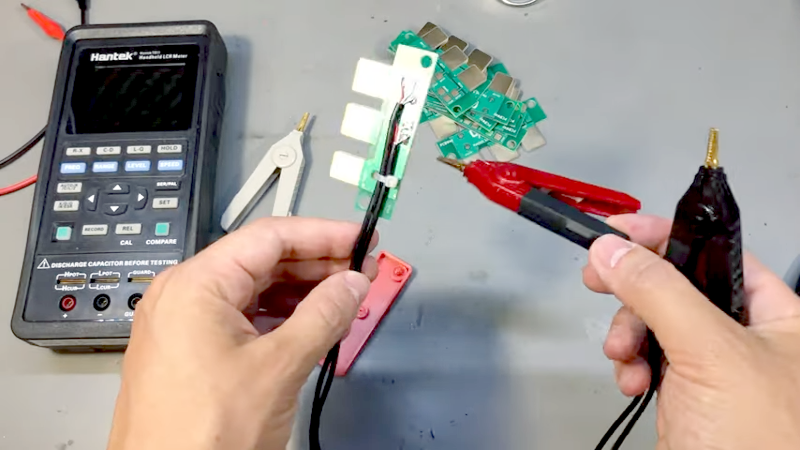
[VoltLog] has a cheap Hantek LCR meter, but it only has two probes. The best resistance and impedance measurements, though, use four wires to improve accuracy. The first order of business was a custom PCB to fit into the connector of the meter, along with a 3D-printed case.
Using a four-wire scheme requires unusual alligator clips that don’t electrical short the jaws together. The clips were hard to solder and even harder to strain relief. but [VoltLog] seemed to handle it with little problem.
There are some ready-made solutions for this, of course, but the good ones aren’t cheap. Besides, this way, the lead length is exactly what you want and you can control the entire construction, including sheilding and strain releif.
If you haven’t run into four-wire sensing before, it is a simple idea. In a normal two-wire measurement, you send a voltage through the device under test and measure the current through the wires. But since you’re using the same pair of wires to deliver the current and measure it, the resistance of the test leads get tangled up in the measurement.
With four wires, one pair of wires is used to supply the current, and the other to measure the voltage drop across them. The sense wires won’t carry very much current and, thus, there won’t be a significant voltage drop between the device under test and the measurment device. There may be a drop across the supply wires, but we don’t care anymore.
We have seen four-wire measurements in a lot of different places. We even simulated how it improves measurements and you can too.
"wire" - Google News
August 28, 2020 at 10:30PM
https://ift.tt/2YZKY2P
Creating Kelvin Test Leads For Four-Wire Measurments - Hackaday
"wire" - Google News
https://ift.tt/2YtvSDd
https://ift.tt/2VUOqKG
Bagikan Berita Ini














0 Response to "Creating Kelvin Test Leads For Four-Wire Measurments - Hackaday"
Post a Comment